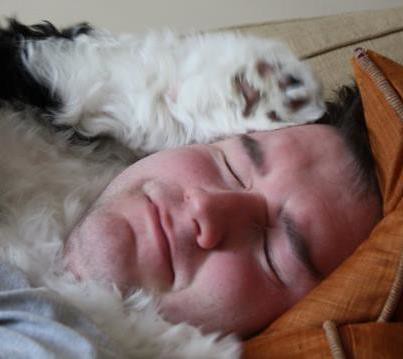Dogs thought processes are not as complex as those of people, so it is unwise to believe that your dog can literally understand everything you say. Trying to talk to your dog like it’s a person will only frustrate you both. Dogs are smart animals, though, and with a little patience and understanding they can be well trained.
Crate training a puppy must establish the fact the the crate is the new home of the puppy. Feed your dog inside the crate with the door open. This will help them associate good food to the crate.
Choose a set phrase for house training your dog. For example, you could use the phrase, “go potty” when you take them outside to help them remember what to do when you go outside and say the command.
As your dog becomes increasingly more responsive to training, you can begin to give him more freedom. The spectrum of freedom and obedience gives your dog the happy life he deserves. Like most things, too much freedom can be counterproductive, so exercise caution with certain liberties.
Patience is definitely a virtue when training your pet. Patience helps avert anger and frustration throughout the training process. Remember that your pet desires to please you but he gets confused due to him not understanding what you want him to do.
Start small when you begin to work on training your dog to give your dog an easy start. Aside from being rewarded instantly for your success, this will also give your dog the important basis of what is an acceptable behavior or trick. You’ll see positive results as you train.
Primary Reinforcement
Primary reinforcement is the most popular way to train a dog. Primary reinforcement uses the things that your dog loves as rewards for positive behavior. This can be a belly rub, a favorite toy or a tasty treat. This helps them to make positive associations with the desired behaviors.
As you train your dog, be certain to gain his attention the same way every time. Use your dog’s name when giving a command. First, call his name then give him a verbal or gesture command. Dogs commonly respond quickly when their names are called, and they realize that you want their attention.
Continue training your dog throughout its life to make sure that its good behavior persists. You do not have to stop training them as a puppy. If you provide positive reinforcement for desirable behaviors, your dog will continue to be obedient, and when you provide your dog with consistent discipline, negative behaviors are less likely to occur.
Identify a single word that you will use as a no-bark command. Use your no-bark command and follow with a treat only when the dog is quiet. Only give the treat when you dog has done as you have asked. If this is done with sufficient frequency, the dog is sure to associate treats with the command to be silent.
You cannot rush through the training process. Puppies do not have a very long attention span and limited energy, keep it brief and positive. If training sessions are too long, the puppy won’t remember the specifics of the training session, just that is was grueling and exhausting. This will make it harder to train him next time.
When you are training your dog with a leash, try to ensure that the leash is loose. Dogs become excited when they are exploring a new area. Because of their eagerness; they tend to strain on the limits of a leash. The savvy owner will discourage this behavior, instead encouraging his or her pet to walk with some slack in the leash.
After learning some helpful hints on how to get through to your dog and train it to behave to your expectations you simply need to follow what you have learned. After changing your dogs behavior to fit with the tips suggested you can properly train your dog.

